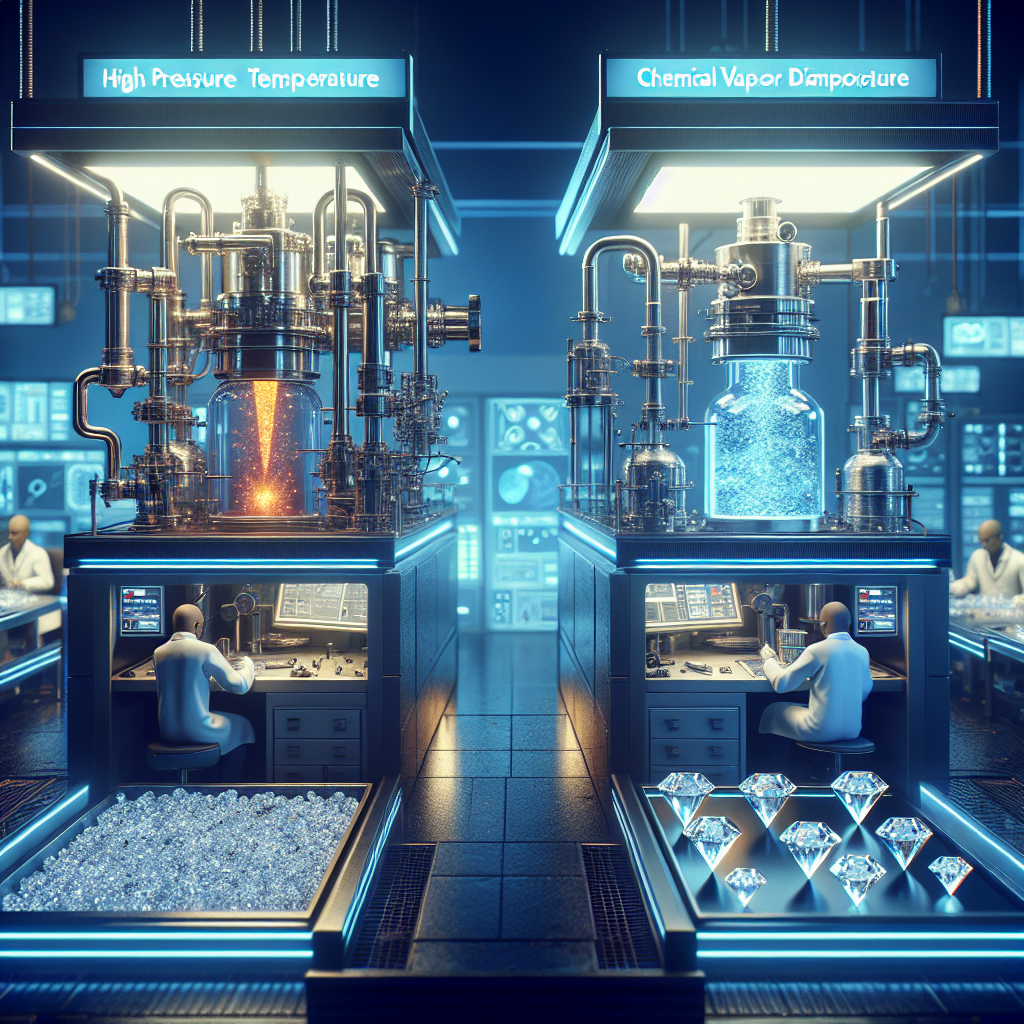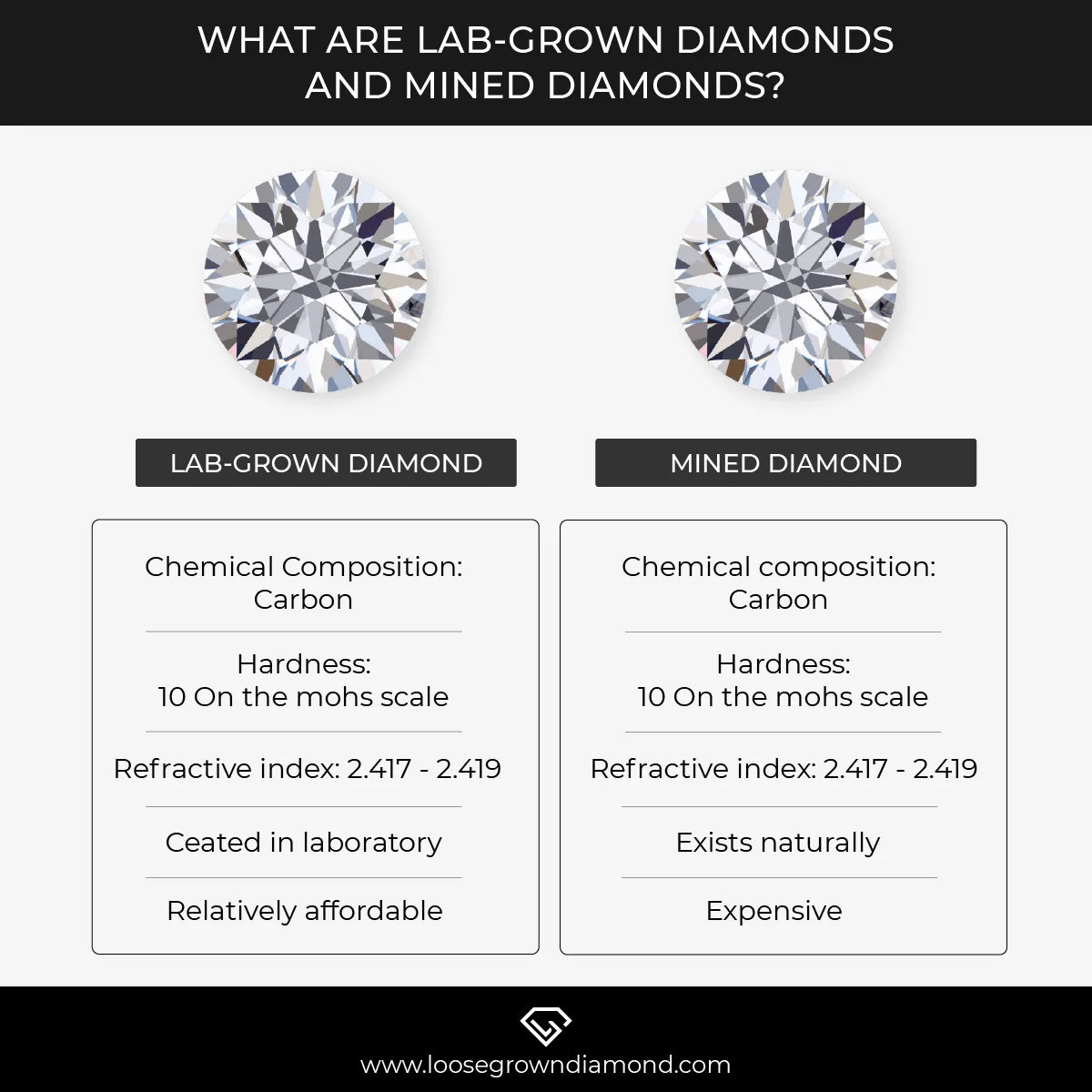About Lab grown Diamonds

Go Green
One of the major advantages of lab-grown diamonds is their environmental-friendliness. Unlike mining, which can lead to deforestation, habitat destruction, and the displacement of local communities, lab-grown diamonds have a much lower impact on the environment. They also offer a conflict-free and ethical alternative to mined diamonds, since they don't involve any questionable labor practices.
Mystery Unveiled
These diamonds are not mined from the earth like natural diamonds. Instead, they are made by scientists in a controlled lab environment using high technology processes. There are two main methods for creating lab-grown diamonds: High Pressure-High Temperature (HPHT) and Chemical Vapor Deposition (CVD). Both methods replicate the conditions that cause diamonds to form naturally.
Unlock the Process
The HPHT process involves placing a small diamond seed into pure carbon and then applying intense heat and pressure. This causes the carbon to melt and start forming a diamond around the seed. The CVD process, on the other hand, involves placing a diamond seed in a chamber filled with carbon-rich gas and heating it until the gas turns into plasma. This triggers the release of carbon atoms that then stick to the diamond seed, causing it to grow.

Discover the Future
Lab-grown diamonds are exactly what their name suggests - diamonds that have been created in a laboratory. They are also commonly known as synthetic, created, cultured, or cultivated diamonds.

Breaking Down the Facts
Lab-grown diamonds have the same physical, chemical, and optical properties as natural diamonds. To the naked eye, they look exactly the same. They are also certified by the same leading gemological institutes that certify natural diamonds.
Experience the Benefits
essentially, with lab-grown diamonds, you can have all the sparkle and beauty of a natural diamond, but at a lower cost and with less to no impact on the environment.



